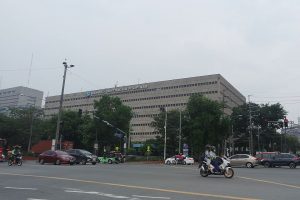




Philippines Trade Update: Trade trajectories trend along
 DOWNLOAD
DOWNLOAD

Policy Rate Updates: Double cut finale
 DOWNLOAD
DOWNLOAD

Monthly Economic Update: One for the road
 DOWNLOAD
DOWNLOAD


Yields on term deposits inch lower

Yields on the Bangko Sentral ng Pilipinas’ (BSP) term deposits edged lower on Wednesday amid progress in the US debt limit deal and as market players await May Philippine inflation data.
Demand for the BSP’s term deposit facility (TDF) amounted to PHP 221.806 billion on Wednesday, higher than the PHP 220 billion on the auction block and the PHP 199.795 billion in tenders seen a week earlier for a PHP 190-billion offer.
Broken down, the seven-day term deposits fetched bids amounting to PHP 123.506 billion, surpassing the PHP 120 billion auctioned off by the BSP and the PHP 103.975 billion in tenders logged the previous week for a PHP 110-billion offer.
Accepted rates for the tenor ranged from 6.3% to 6.64%, unchanged from the band logged a week ago. This caused the average rate of the one-week deposits to slip by 0.63 basis point (bp) to 6.5863% from 6.5926% previously.
Meanwhile, demand for the two-week deposits amounted to PHP 98.30 billion, lower than the PHP 100-billion offer but slightly above the PHP 95.82 billion seen last week for PHP 80 billion up for auction.
Banks asked for yields from 6.25% to 6.651%, a tad higher than the 6.2% to 6.6344% range seen last week. This caused the average rate of the paper to dip by 0.83 bp to 6.5852% from the 6.5935% quoted on May 24.
The BSP has not auctioned off 28-day term deposits for more than two years to give way to its weekly offerings of securities with the same tenor.
The term deposits and the 28-day bills are used by the central bank to mop up excess liquidity in the financial system and to better guide market rates.
The lower TDF yields seen on Wednesday followed the declining trend in rates of US Treasuries, Rizal Commercial Banking Corp. Chief Economist Michael L. Ricafort said in a Viber message.
Yields on 10-year US Treasury notes dropped by 10 bps to 3.72% on Tuesday, while thirty-year yields fell 8 bps to 3.9%, Reuters reported.
US markets reacted to a weekend deal to suspend the USD 31.4-trillion debt ceiling until 2025 while keeping some costs flat.
However, the deal is unlikely to pass easily through Congress, and the risk that the US may run out of money to pay its debts in early June remains.
Mr. Ricafort said the lower TDF yields also came ahead of the release of May Philippine inflation data on June 6.
Easing inflation “could fundamentally support the easing trend in Treasury bill and Treasury bond auction yields,” especially if inflation slows further later in 2023 and in early 2024, he said.
In a statement on Wednesday, the BSP said headline inflation may have settled within the 5.8% to 6.6% range in May amid lower pump prices.
If realized, inflation would exceed the BSP’s 2-4% target for the 14th consecutive month.
Still, the lower end of the forecast or 5.8% would be the slowest pace recorded in a year or since the 5.4% recorded in May 2022. The higher end would match the 6.6% headline print recorded in April.
The BSP sees inflation averaging at 5.5% this year. For the first four months, the consumer price index averaged 7.9%.
The central bank last month paused its aggressive tightening cycle after hiking for nine straight meetings amid expectations of easing inflation, with the key rate at 6.25%.
The Monetary Board raised benchmark interest rates by 425 bps from May 2022 to March 2023.
The next BSP policy meeting will be held on June 22. — By Keisha B. Ta-asan with Reuters
This article originally appeared on bworldonline.com





 By BusinessWorld
By BusinessWorld